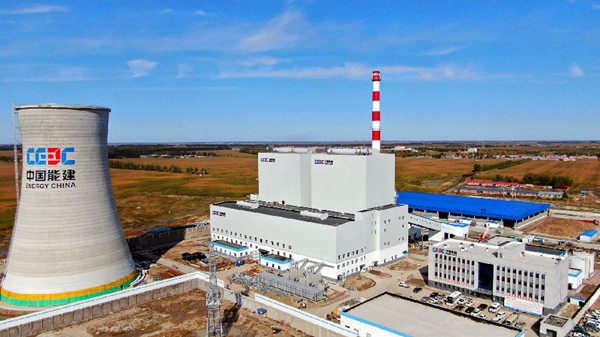The No. 1 generator unit of the biomass cogeneration demonstration in Zhaodong, Northeast China's Heilongjiang Province, started service on Jan 13, 2022, after a 96-hour trial operation.
Invested and built by China Energy Engineering Group Co., Ltd. (Energy China Group), the project has a total investment of about 750 million yuan ($118.2 million).
It includes construction of two 40-megawatt high-temperature ultra-high pressure primary reheating generator units, each of which is equipped with a 130-ton circulating fluidized bed boiler and a 40-MW extracted condensing turbine power generation and heating generation unit.
Using straw briquettes as the main fuel, the project has the largest total installed capacity of its kind in China.
It is the Energy China Group's first biomass power station and a key part of its efforts to support China's goal of peaking carbon dioxide emissions by 2030 and reaching carbon neutrality by 2060.
Once operational, the project is expected to provide about 500 million kilowatt-hours of clean power annually, which will guarantee local heating and power supply.
The project will consume about 618,000 tons of biomass fuel such as straw annually, an equivalent of burning 170,000 tons of standard coal compared with traditional thermal power and reducing carbon dioxide, sulfur dioxide and nitrogen oxide emissions by 460,000, 1,700 and 2,300 tons respectively.
It will play a role in solving pollution problems in affected areas.

A view of the biomass cogeneration demonstration in Zhaodong, Heilongjiang Province [Photo/sasac.gov.cn]
(Executive editor: Niu Yilin)